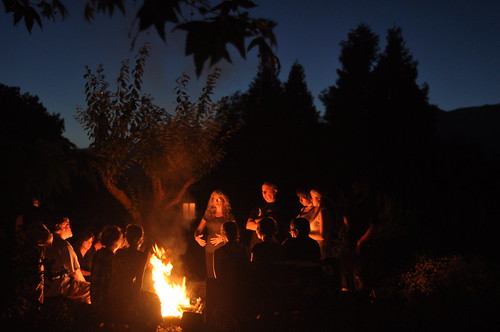The practice of bioregional discipleship: herbalism, murals, bible study, permaculture, and Wolf’ems, oh my!
It’s been a month since Charletta and I arrived in the Los Angeles airport direct from our time with Christian Peacemaker Teams in Colombia. Now that we’ve caught our breath, I wanted to share with you a window into our first two whirlwind weeks here in the Ojai valley working with Bartimaeus Cooperative Ministries. Charletta and I were part of preparing for and hosting the July Bartimaeus Institute entitled “Rooting Faith: Theology and Practices of Bioregional Discipleship.” I focused on documenting the week for a wider audience through photography and video. This is my first experiment in Youtube journalism. Rather than write a lot about the week, I’ll give a basic introduction and then share the videos that I created:
On the first night of the institute we gathered around the fire to sing songs and talk together at dusk (above). Aside from lodging, the event was hosted by Ched Myers and Elaine Enns in their house and their yard, which is entirely given over to vegetables, fruit trees and native plants. Mornings were spent doing Bible study and studying permaculture and afternoons were spent doing hands on learning of permaculture techniques in the garden. Evenings were practical workshops on a variety of subjects. Chris Grataski and Melissa Shank taught us about permaculture and herbalism.
July 30, 2012 bioregionalism, Civilization, Discipleship, Permaculture, The Bible Read more >


